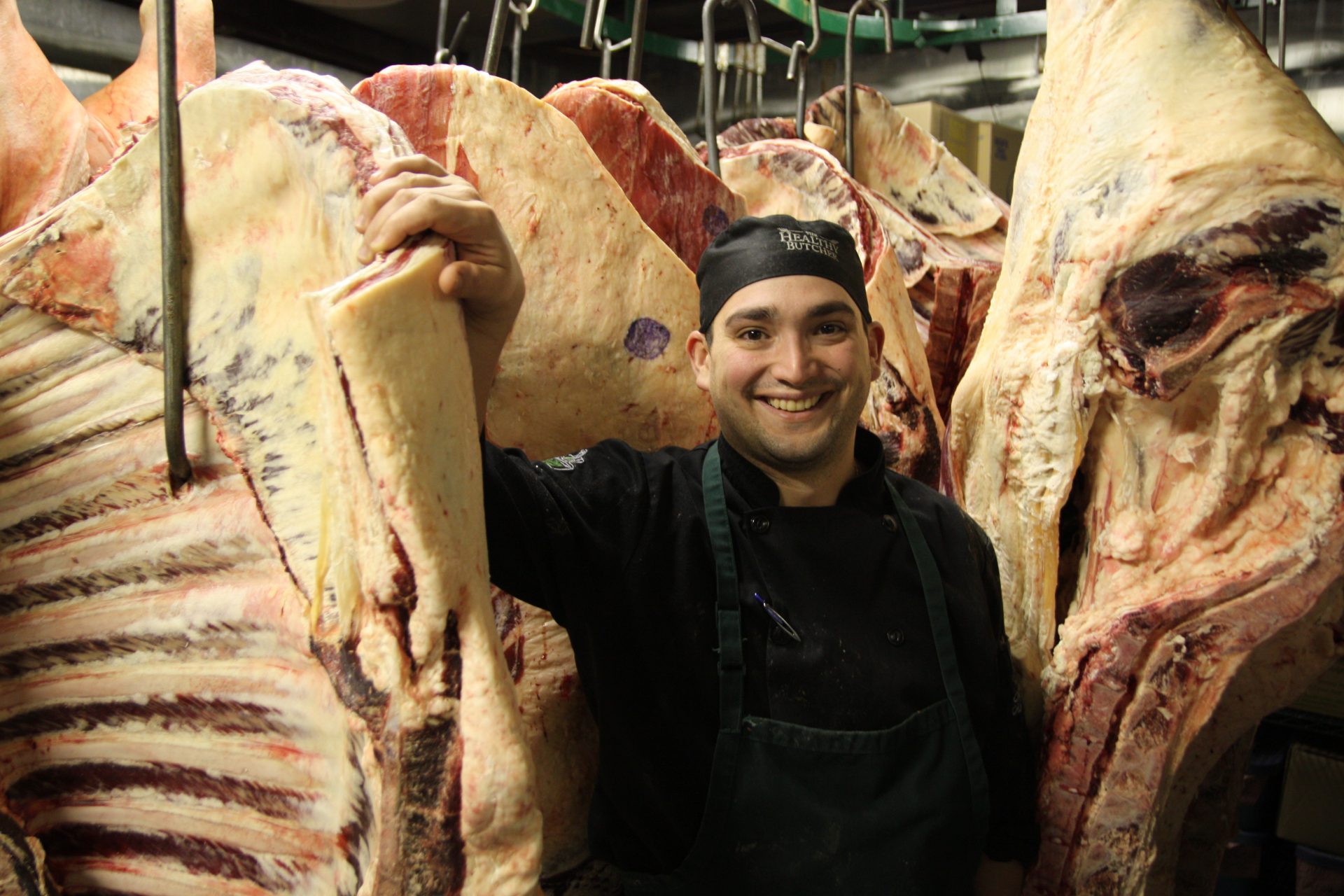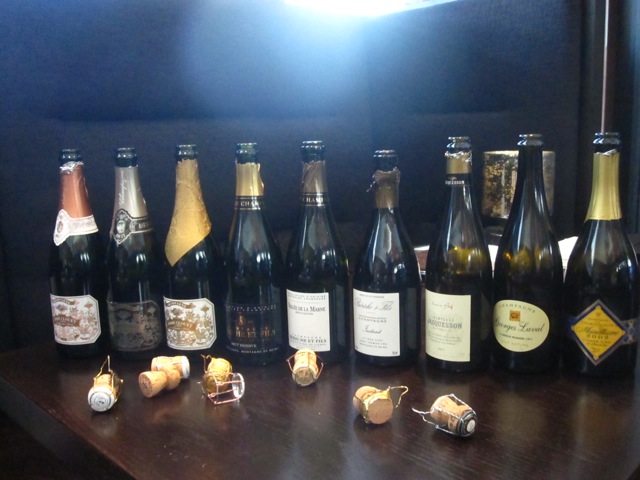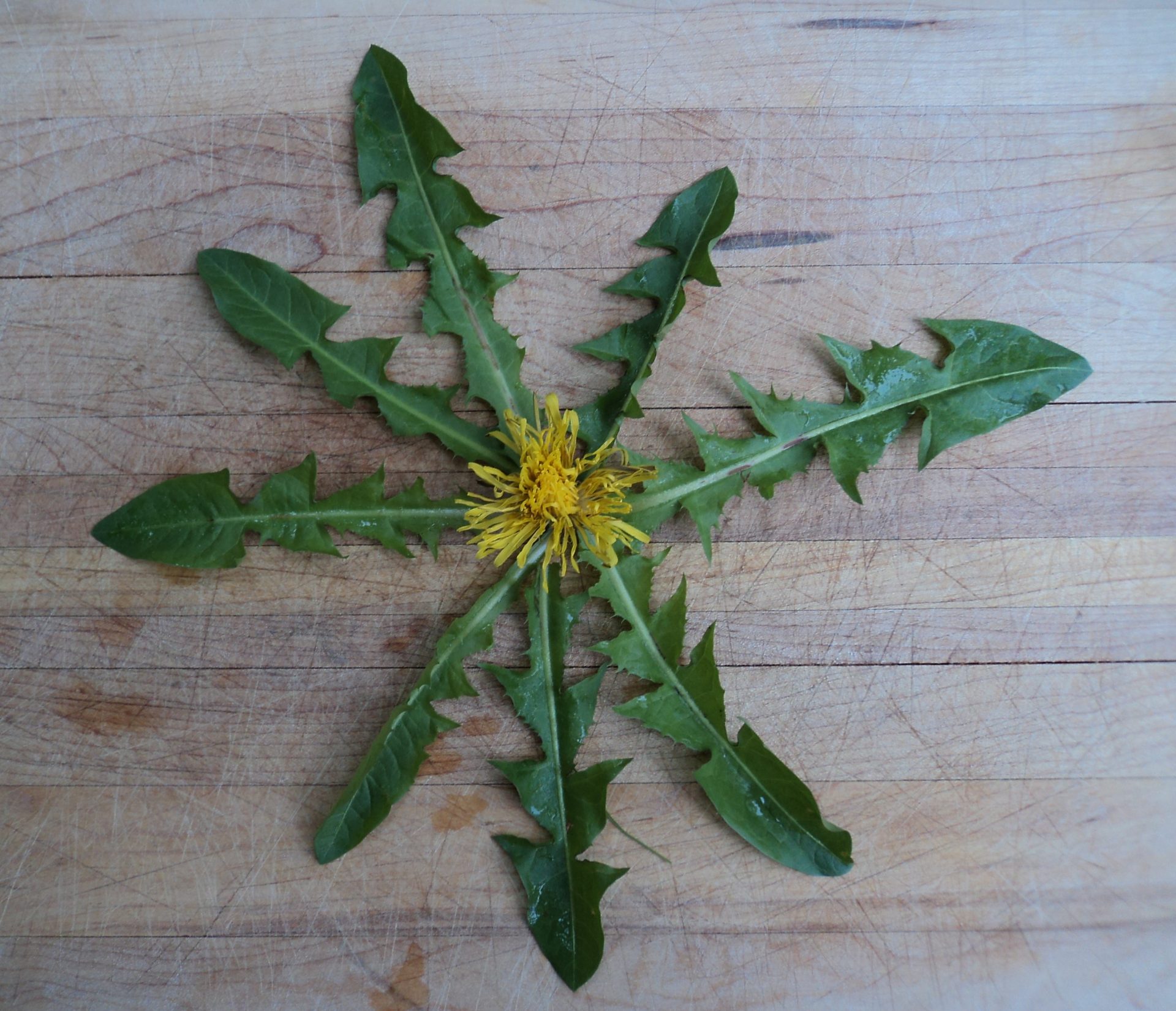By Mario Fiorucci, Co-Founder of The Healthy Butcher
It’s time to dispel some misunderstandings about what “aged meat” is and is not. To do this, let’s simply group all meat available for purchase into three categories: (1) not aged; (2) Wet Aged; and (3) Dry Aged. We’ll start with the latter since it is, in my opinion, the most important.
Dry Ageing is the process of hanging meat, usually the whole carcass or large portions as depicted in the photograph, in a temperature and humidity controlled environment for a period of time. During this hanging time, two important processes are at work. First, the natural enzymes begin to break down the fibres of the muscle, and in turn tenderize the meat. Second, the water or moisture in the meat evaporates – which is why we refer to the process as “dry ageing”. The loss of water will have the effect of concentrating the flavour of the meat; upwards of 20% of weight can be lost during dry ageing which adds to the final price tag. Paradoxically, the loss of water actually makes for moister meat when cooked. When wet meat, or meat that is not dry aged, is cooked the water in the meat expands as the temperature rises during cooking, thereby stretching the fibres of the meat and leaching out between them. Further, if you plan on freezing your meat then it is wise to only freeze dry aged meat – less water in the meat means less frost bite. Up until the 1960s, dry ageing meat was the standard. Of course, there is a huge cost to dry ageing – both because there is a significant loss of weight (and meat is sold by weight) and cost of storing the meat in refrigerated environments.
On the opposite end of the spectrum is not ageing meat at all. In today’s modern meat processing industry, the standard is to break the carcass down and vacuum-seal the meat in plastic bags within 24 hours. Cuts of meat will usually be on grocery store shelves for sale within two-to-four days after harvest. Wet Ageing is the ingenious industry term used for keeping the meat in the vacuum bags for longer periods of time. Industry experts are quick to point out that the tenderizing effect still takes place because the enzymes are still at work breaking down muscle tissue. While that is true, let’s call a spade a spade, the meat is essentially marinating in its own blood. Not only will the flavour of the meat not concentrate as it does in the dry ageing process, but I have yet to taste a wet aged steak that doesn’t taste iron-like to a certain extent.
Lastly, it is important to point out that most meat that is dry aged is beef – and there is a reason for that. Younger animals such as pork, lamb and veal do not take well to lengthy dry ageing as they are unlikely to have the fat covering or the marbling to protect the meat from becoming rotten. Even 100% grassfed beef, which we sell a lot of, has to be very carefully dry aged for the same reason. The main point to remember is that ageing beef or any meat is an art, and thankfully it is not a lost art because of the few quality butchers shops in Toronto that realize that our era is not all about selling cheap food.







